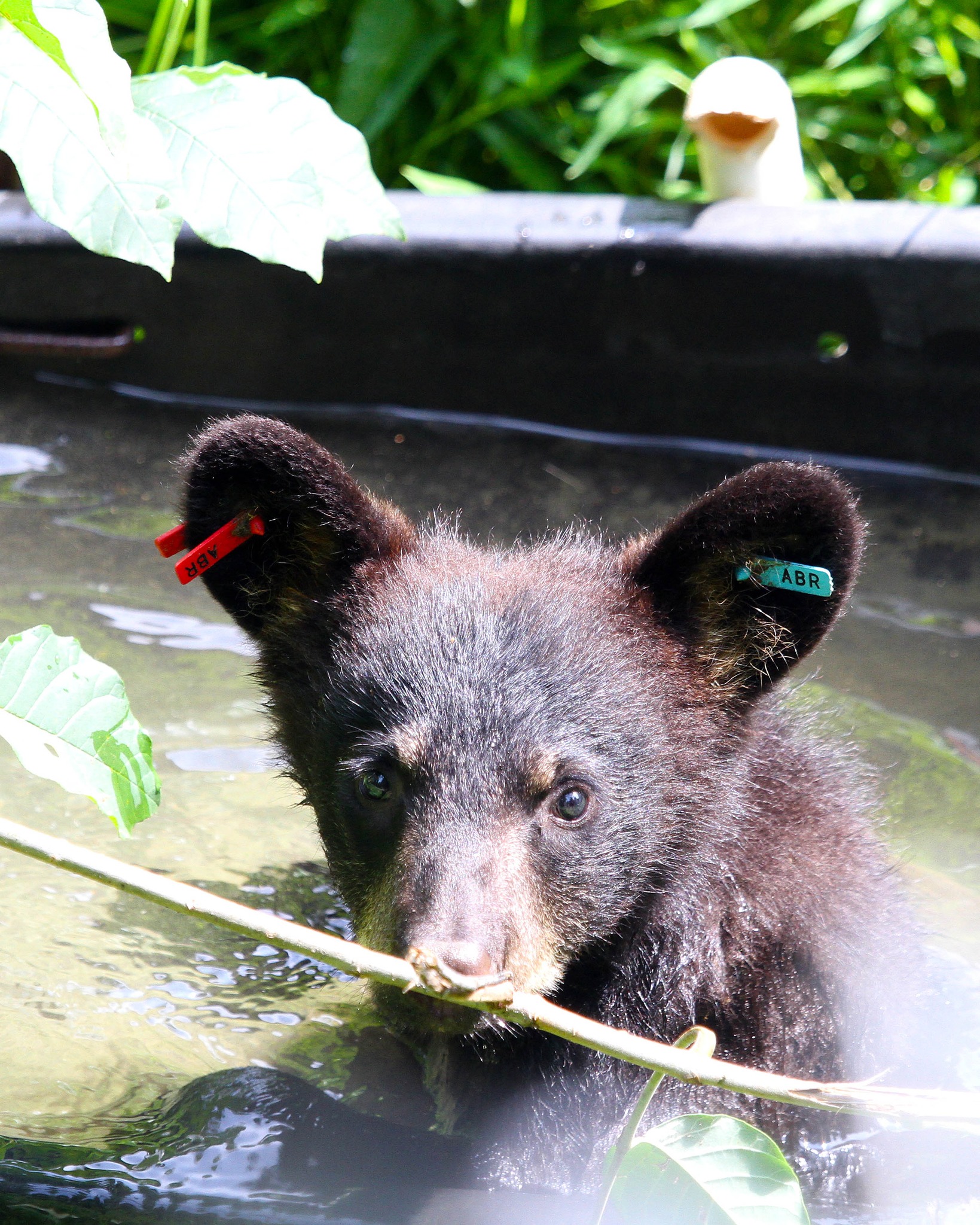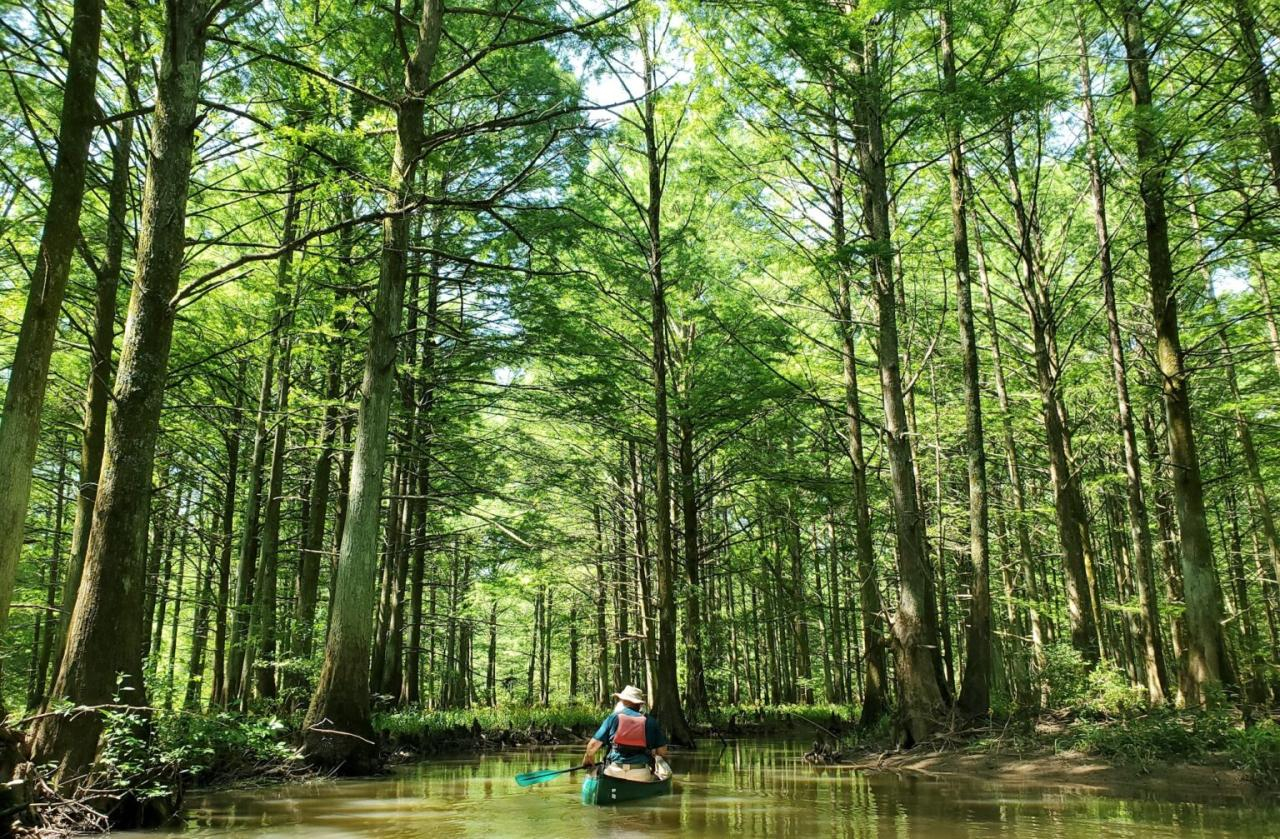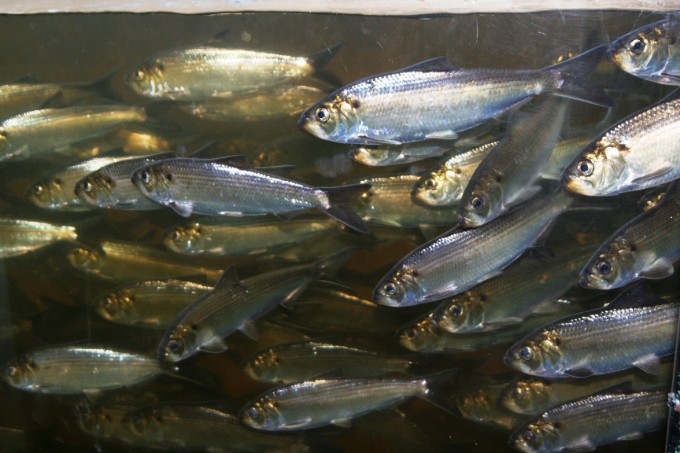
6 Clean Water and Sanitation (34)
Ensure availability and sustainable management of water and sanitation for all
Network alert: Tennessee Sustainability Conference set for Gatlinburg
Written by Cindy Dupree Holloway The towering Space Needle in Gatlinburg offers views of Great Smoky Mountains National Park. The city is host to the Tennessee Sustainability Conference set to begin Aug. 20. Gatlinburg Chamber of Commerce
The towering Space Needle in Gatlinburg offers views of Great Smoky Mountains National Park. The city is host to the Tennessee Sustainability Conference set to begin Aug. 20. Gatlinburg Chamber of Commerce
Conservation education event is hosted in part by Tennessee Chamber to address sustainability challenges
GATLINBURG — The annual Tennessee Sustainability Conference is scheduled to take place Aug. 20-22 at the Park Vista Hotel. The conference is a partnership among Tennessee Recycling Coalition, Tennessee Chamber of Commerce and Industry, and Tennessee Environmental Conference. It brings together environmental professionals from across the region.
Nearby Great Smoky Mountains National Park is an internationally known treasure trove of biodiversity and accompanying sustainability research.
“The three-day event will provide attendees an accelerated learning opportunity featuring the latest trends and best practices in environmental sustainability,” said Tennessee Recycling Coalition Executive Director Amber Greene. “Staying on the cutting-edge of our ever-growing industry is essential to improving the lives of all Tennesseans. I encourage environmental leaders across the state to join us.”
According to organizers, the event will bring environmental professionals, decision-makers, government officials, business and industry leaders, attorneys, consultants, engineers, developers, architects, agribusiness leaders, energy experts, water planning districts, universities, public health officials, and solid waste and recycling experts, from across the region to learn about the latest trends and best practices in environmental sustainability.
- tennessee sustainability conference
- gatlinburg events
- sustainability education
- sustainability research
- sustainable agriculture
- sustainability
- tennessee recycling coalition
- amber greene
- park vista hotel
- learn about sustainability
- brownfield program
- brownfield remediation
- tire disposal
- green events knoxville
- solid waste
- mayors retreat gatlinburg
- great smoky mountains national park
- science research
A happy ending and new beginning after a sad story at Appalachian Bear Rescue
Written by Hellbender Press Rosemary Bear (class of 2022) cools off in a cub tub (all to herself this time, thank you) on a hot July day at Appalachian Bear Rescue in Townsend. The center entered a new agreement with licensing authority Tennessee Wildlife Resources Agency that calls for improved sanitation, regular pen rotation and burnovers and other management techniques. TWRA euthanized 13 bears in December 2024 following fatal and persistent strains of pneumonia. The center has been closed since; ABR director Greg Grieco said on July 22 the facility expects to complete renovations and be ready for the next crop of orphaned and injured bears by spring 2026. Appalachian Bear Rescue
Rosemary Bear (class of 2022) cools off in a cub tub (all to herself this time, thank you) on a hot July day at Appalachian Bear Rescue in Townsend. The center entered a new agreement with licensing authority Tennessee Wildlife Resources Agency that calls for improved sanitation, regular pen rotation and burnovers and other management techniques. TWRA euthanized 13 bears in December 2024 following fatal and persistent strains of pneumonia. The center has been closed since; ABR director Greg Grieco said on July 22 the facility expects to complete renovations and be ready for the next crop of orphaned and injured bears by spring 2026. Appalachian Bear Rescue
TWRA and bear rescue center reach agreement to resume rehab services at Townsend facility next year
This is a joint release from the Tennessee Wildlife Resources Agency and Appalachian Bear Rescue.
NASHVILLE — The Tennessee Wildlife Resources Agency (TWRA) and Appalachian Bear Rescue (ABR) have reached a new partnership agreement for black bear rehabilitation in Tennessee.
During the course of 2023 and 2024, the presence of pneumonia raised initial concerns about the health of bears being housed at ABR. After a difficult decision in December 2024 to euthanize 13 bears, the agency temporarily paused the placement of bears at the facility.
In the months that followed, TWRA staff sought input from bear managers, wildlife veterinarians and disease pathologists in other states on best management practices and pen sanitation measures such as discing, burns and leaving pens empty on an annual rotational schedule. ABR staff immediately started working to implement extensive modifications and upgrades to the facility to align with the recommendations of these professionals.
TWRA leadership also began working with ABR to draft an official operating agreement to strengthen the relationship between the two entities, set clear expectations for best management practices for bear rehabilitation and provide transparency to members of the public invested in wildlife conservation.
Industry-backed legislation would bar the science behind hundreds of environmental protections
Written by Sharon Lerner Trichloroethylene is among the chemicals deemed a serious public health risk by way of the Environmental Protection Agency’s IRIS database. Legislation in Congress could bar the use of IRIS and its associated scientific methods from being used to calculate the environmental and human health risks of chemicals such as TCE, a proven carcinogen. ChemLibrarian/Wikipedia Commons
Trichloroethylene is among the chemicals deemed a serious public health risk by way of the Environmental Protection Agency’s IRIS database. Legislation in Congress could bar the use of IRIS and its associated scientific methods from being used to calculate the environmental and human health risks of chemicals such as TCE, a proven carcinogen. ChemLibrarian/Wikipedia Commons
Two bills in Congress would prohibit the Environmental Protection Agency from using hundreds of chemical assessments completed by its IRIS program in environmental regulations or enforcement.
This story was originally published by ProPublica.
WASHINGTON, D.C. — For decades, Republican lawmakers and industry lobbyists have tried to chip away at the small program in the Environmental Protection Agency that measures the threat of toxic chemicals.
Most people don’t know IRIS, as the program is called, but it is the scientific engine of the agency that protects human health and the environment. Its scientists assess the toxicity of chemicals, estimating the amount of each that triggers cancer and other health effects. And these values serve as the independent, nonpartisan basis for the rules, regulations and permits that limit our exposure to toxic chemicals.
Now IRIS faces the gravest threat to its existence since it was created under President Ronald Reagan four decades ago.
Legislation introduced in Congress would prohibit the EPA from using any of IRIS’ hundreds of chemical assessments in environmental rules, regulations, enforcement actions and permits that limit the amount of pollution allowed into air and water. The EPA would also be forbidden from using them to map the health risks from toxic chemicals. The bills, filed in both the U.S. Senate and House of Representatives earlier this year, are championed by companies that make and use chemicals, along with industry groups that have long opposed environmental rules. If it becomes law, the “No IRIS Act,” as it’s called, would essentially bar the agency from carrying out its mission, experts told ProPublica.
“They’re trying to undermine the foundations for doing any kind of regulation,” said William Boyd, a professor at UCLA School of Law who specializes in environmental law. Boyd noted that IRIS reports on chemicals’ toxicity are the first step in the long process of creating legal protections from toxic pollutants in air and water.
“If you get rid of step one, you’re totally in the dark,” he said.
If the act passes, companies could even use the law to fight the enforcement of environmental rules that have long been on the books or permits that limit their toxic emissions, environmental lawyers said.
- iris
- propublica
- chemical regulation
- chemical pollution epa
- chemical database
- no iris act
- sharon lerner
- tce
- epa chemical regulations
- trump and environment
- environmental regulations
- carcinogens
- public health protection
- worst chemicals
- forever chemicals
- propublic environment
- propublica environment reporting
- best environmental reporting
- integrated risk information system
- toxic pollution
- environmental protection agency
UT vet school declines to treat wild birds, including raptors, songbirds and waterfowl, in deference to bird flu threat
Written by Sandra Harbison
Veterinary college takes precautionary measures due to bird flu resurgence
Sandra Harbison is a media relations specialist with the University of Tennessee College of Veterinary Medicine.
KNOXVILLE — High Pathogenic Avian Influenza (HPAI), a very contagious and often deadly disease of poultry, can result in the deaths of entire flocks within a matter of days. Also known as bird flu, HPAI has recently been detected in wildlife and poultry in Tennessee. This virus can spread quickly between birds, including birds that do not have any signs of disease. It has been reported to impact certain mammalian species, including humans, according to the Centers for Disease Control and Prevention. There is no treatment for HPAI, and the best prevention is to avoid sources of exposure.
Out of an abundance of caution, the University of Tennessee College of Veterinary Medicine (UTCVM) has made the difficult decision to temporarily halt the acceptance and treatment of injured or abandoned wild birds including raptors, songbirds or waterfowl (including owned waterfowl). This precautionary measure will help protect patients, faculty, staff and students from potential exposure to HPAI.
(The Tennessee Wildlife Resources Agency on Dec. 18 warned hunters, birdwatchers and poultry owners of increased bird flu risk. The CDCP as of Jan. 24 considers bird flu “widespread” in wild bird populations and reports limited outbreaks in poultry and livestock workers.)
Conservation starters: Some of the best science papers of 2024
 Sukakpak Mountain lies in the Brooks Range of Alaska. Mountain environments were the subject of a conservation paper that found more protections are needed for the many differing types of montaine environments. “Mountains are super-important for biodiversity, ecosystem function, and the benefits people get from nature. We ignore them at our peril,” said a Society for Conservation Biology researcher. Bob Wick/Bureau of Land Management
Sukakpak Mountain lies in the Brooks Range of Alaska. Mountain environments were the subject of a conservation paper that found more protections are needed for the many differing types of montaine environments. “Mountains are super-important for biodiversity, ecosystem function, and the benefits people get from nature. We ignore them at our peril,” said a Society for Conservation Biology researcher. Bob Wick/Bureau of Land Management
Scientists churned out studies on life, the planet and the roles people play in the natural world
This story was originally published by The Revelator.
Every month scientific journals publish hundreds of new papers about endangered species and wildlife conservation. It’s a firehose of information in a world that feels increasingly in flames.
We asked researchers to send us their best or favorite papers of the past year. We received submissions that offer hope, guidance, analysis, and insight into emerging threats.
Aerin Jacob, director of science and research at Nature Conservancy of Canada, sent a coauthored paper from Conservation Biology about mountains — a habitat type that deserves more attention. “People often think that mountain ecosystems are so rugged and inaccessible that they don’t need habitat protection, but that’s not true,” she wrote. “We studied six major mountain regions around the world and found that on average half of them are as modified as the rest of the world; two-thirds of them don’t (yet) meet the 30×30 global protection target; and existing protected areas don’t include the vast majority of mountain ecosystem types. Mountains are super-important for biodiversity, ecosystem function, and the benefits people get from nature. We ignore them at our peril.”
 One noteworthy study of 2024 was the role public information consumption plays in the perception of sharks, such as this endangered Caribbean Reef Shark. A researcher warns misinformation is polluting science. Brian Gratwicke via Revelator.
One noteworthy study of 2024 was the role public information consumption plays in the perception of sharks, such as this endangered Caribbean Reef Shark. A researcher warns misinformation is polluting science. Brian Gratwicke via Revelator.
A long, sad tale of when coal ash filled a valley so low
Written by Ray Zimmerman In the early morning hours of Dec. 22, 2008, the earthen wall of a containment pond at Tennessee’s Kingston Fossil Plant gave way. The breach released 1.3 million cubic meters (1.7 cubic yards) of sludge, infiltrating a nearby river and damaging dozens of homes. NASA Earth Observatory
In the early morning hours of Dec. 22, 2008, the earthen wall of a containment pond at Tennessee’s Kingston Fossil Plant gave way. The breach released 1.3 million cubic meters (1.7 cubic yards) of sludge, infiltrating a nearby river and damaging dozens of homes. NASA Earth Observatory
Journalist’s book offers deep sweep of 2008 coal-ash disaster at TVA’s Kingston coal plant
CHATTANOOGA — Jared Sullivan’s book, Valley So Low, is “A courtroom drama about the victims of one of the largest environmental disasters in US history — and the country lawyer who challenged the notion that, in America, justice can be bought.” Those words from the publisher’s dust jacket sum up the story, but the pathos of workers, certain that they got sick on the job, and the lawyer’s struggle against a well-funded corporate defense, is in the details.
Most residents of the Tennessee Valley remember the 2008 disaster when a wall of a coal ash slurry rushed out of the Kingston Steam Plant, flooding the Emory River and inundating 300 acres of the surrounding countryside.
Sullivan offered insight into the story to an audience in Chattanooga in October. When workers fell ill after the cleanup, local personal injury lawyer Jim Scott challenged Jacob’s Engineering, a private company the Tennessee Valley Authority contracted to manage the cleanup. Scott was the only lawyer willing to take their case, according to Sullivan.
- jared sullivan
- kingston coal ash spill
- kingston coal ash spill book
- 2008 coal ash disaster
- coal ash cleanup
- coal ash spill
- coal ash contamination
- coal fly ash slurry
- valley so low
- valley so low review
- ray zimmerman
- chattanooga nature events
- tennessee valley authority
- is coal ash storage unsafe
- coal ash book
- environmental journalist
- environmental journalism
Pending state conservation deal would protect forest and water resources
Written by Cassandra Stephenson A man paddles down the main stem of the Wolf River in West Tennessee. The state is working to purchase 5,477 acres of forest land near Grand Junction from the Hobart Ames Foundation. The land is part of the Wolf River watershed. Wolf River Conservancy
A man paddles down the main stem of the Wolf River in West Tennessee. The state is working to purchase 5,477 acres of forest land near Grand Junction from the Hobart Ames Foundation. The land is part of the Wolf River watershed. Wolf River Conservancy
The roughly 5,500-acre property features wetland forest used for research by the University of Tennessee
This article was originally published by Tennessee Lookout.
GRAND JUNCTION — About 60 miles east of Memphis near the Mississippi line, verdant hardwood trees and ecologically exceptional streams weave through thousands of acres of rolling hills.
The land is home to a diverse array of aquatic and terrestrial life, decades-old archaeological sites and a watershed that feeds into the aquifer where hundreds of thousands of Memphians source their drinking water.
If all goes to plan, 5,477 acres of this land will soon become Tennessee’s newest state forest, securing its preservation for posterity.
The land is a portion of the 18,400-acre historic Ames Plantation, a privately owned tract in Fayette and Hardeman Counties amassed by Massachusetts industrialist Hobart Ames in the early 1900s.
- memphis aquifer
- memphis drinking water
- land conservation
- west tennessee land preservation
- drinking water protections
- cassandra stephenson
- tennessee lookout
- conservation fund
- ames plantation
- wolf river
- wolf river conservancy
- ut ag research
- hobart ames foundation
- tennessee state forests
- state forests in tn
- grand junction, tennessee
- ford blue oval
- heritage conservation trust
- forest service legacy program
Editorial: Revoke North Carolina’s water regulatory authority
Written by Gray Jernigan
EPA should take over water protections in face of hostile legislature
Gray Jernigan is deputy director and general counsel for MountainTrue.
RALEIGH — MountainTrue is committed to safeguarding the public water resources of Western North Carolina. Our mission to protect the health of our waterways and the well-being of our communities has never been more critical. However, the obstacles we now face have made it clear that the state cannot meet its obligations under the Clean Water Act.
Therefore, MountainTrue has joined the Southern Environmental Law Center, Cape Fear River Watch, Environmental Justice Community Action Network and the Haw River Assembly in filing a formal petition asking the U.S. Environmental Protection Agency to withdraw North Carolina’s authority to regulate water pollution. This action is necessary because the state legislature has crippled the NC Department of Environmental Quality’s ability to protect our waterways, drinking water sources and communities from harmful pollution.
- mountaintrue
- gray jernigan
- epa water regulations
- north carolina deq
- legislature hostile toward water permitting
- north carolina water quality
- north carolina water permitting process
- revoke nc water authority
- cape fear river watch
- environmental justice community action network
- haw river assembly
- support clean water in western north carolina
Tennessee’s mighty Duck River is gravely imperiled
Written by Anita Wadhwani A view of the Duck River, Tennessee longest river, from Old Stone Fort in Manchester. John Partipilo/Tennessee Lookout
A view of the Duck River, Tennessee longest river, from Old Stone Fort in Manchester. John Partipilo/Tennessee Lookout
The Duck landed third on American Rivers’ list of most endangered rivers in the U.S.
This story was originally published by Tennessee Lookout.
COLUMBIA — The Duck River, which winds through seven Middle Tennessee counties for more than 260 miles before reaching the Tennessee River, is among the most endangered rivers in the United States, according to a new report by the advocacy group American Rivers.
Threatened by population growth, development and climate change “urgent action is needed to safeguard this vital ecosystem,” the report released Tuesday said.
The Duck River serves as the source of drinking water for nearly 250,000 Tennesseans. Industry and agriculture depend on it, too. Often considered one of Tennessee’s most pristine waterways, it draws more than 150,000 people each year for boating, fishing and other recreation. Last year, in an effort to protect the river from a controversial plan to establish a landfill near its banks, state lawmakers designated a portion of the river in Maury County an official state scenic waterway.
Ijams and other volunteers pull, push to restore riverine beauty
Written by Ijams Nature Center Odd robotic forms were among the every-worldly items pulled by volunteers from the Tennessee River and its tributaries earlier this month. Courtesy Ijam’s Nature Center.
Odd robotic forms were among the every-worldly items pulled by volunteers from the Tennessee River and its tributaries earlier this month. Courtesy Ijam’s Nature Center.
Betty Boop recovered from drink during widespread river cleanup
KNOXVILLE – Rain didn’t stop 441 volunteers from cleaning up the community’s waterways during the 35th annual Ijams River Rescue on March 9.
They tackled trash at 31 sites in Knox and Blount counties, filling 1,097 bags with garbage weighing an estimated 21,958 pounds (10.48 tons). That doesn’t include the weight of 46 tires and large items such as household appliances, furniture and car parts.
Plastic and Styrofoam waste was common in all areas, but Ijams River Rescue volunteers found items such as a robot puppy, drug paraphernalia, an antique lounge chair, a full patio set, suitcase, Betty Boop doll and shoes, sofas, stove parts, traffic barrels, a car seat, sports gear, a “nice watch” and a $10 bill.
More...
RESCHEDULED: Mudchasers wanted: Sign up to track pollution and sediment pumps

KNOXVILLE — Join Chris Irwin and others to learn how to help track the origin of sediments and other pollutants in area waterways.
The meeting was postponed by snow and is now set for 7 p.m. Jan. 24 at Barleys, 200 East Jackson Ave., Knoxville.
“Spring is coming and with it rain and mud into the creeks and streams around Knoxville. We think a handful of people working together can stop a lot of mud going into the Tennessee River.
The Revelator: 10 ways targeted dam removals can help solve the climate change dilemma
Written by Gary Wockner Alewives returned by the millions after the Edwards and Ft. Halifax dams were removed in Maine. John Burrows/ASF via The Revelator
Alewives returned by the millions after the Edwards and Ft. Halifax dams were removed in Maine. John Burrows/ASF via The Revelator
By providing both mitigation and adaption, dam removal can lower greenhouse gas emissions and restore carbon sinks.
This article was originally published in The Revelator. Gary Wockner
As the climate crisis escalates, a huge amount of attention and money is being focused on climate solutions.
These can be divided into two categories: solutions that pursue “mitigation,” which lowers greenhouse gas emissions, and those that pursue methods to adapt to climate impacts to increase human and ecological resiliency.
Dams, of course, create enormous environmental harms, many of which have already been described in scientific literature. Equally well documented is the fact that removing dams can restore seriously damaged ecosystems. But missing from almost every climate-solution story and study is how dam removal can be key for both mitigation and adaptation.
Here are 10 reasons how dam removal fights climate change.
- climate action
- dam removal
- the revelator
- gary wockner
- greenhouse gas emission
- methane emission
- natural flow of the river
- river plume
- carbon sink
- reservoir
- biodiversity
- sediment transport
- fish population dynamic
- water supply
- reservoir evaporation
- climate resilience
- heat island
- forest cooling effect
- river cooling effect
- climate crisis
- lake mead water level
- colorado river water restriction
Meet the salamanders making the South a biodiversity hotspot
Written by Southern Environmental Law CenterSkip to main co An eastern newt in its juvenile stage in Blacksburg, Virginia. Courtesy SELC.
An eastern newt in its juvenile stage in Blacksburg, Virginia. Courtesy SELC.
Salamanders are under siege in a changing world
Salamanders are extraordinary creatures. Some of these astonishing amphibians boast vibrant colors and patterns while two-thirds of all species are lungless and able to breathe through their skin. All salamanders have the remarkable ability to regrow limbs, tails, and even parts of their heart and brain, a rare ability in the animal kingdom.
More salamander species live in the Appalachians than anywhere else in the world. Fifty-four species of salamander call Virginia home.
Roughly 20 percent of the world’s salamander species can be found in the South
Unfortunately, the impacts of climate change, habitat loss and pollution pose a real danger to these sensitive creatures. Increased temperatures, changing humidity levels, wildfires and droughts wreak havoc on salamanders, which are impacted by even small changes in habitat conditions and are often specialized to small native ranges.
Southern Environmental Law Center’s work addressing climate change, fighting for clean water, and conservation efforts help protect all kinds of salamanders in the South. To celebrate the Endangered Species Act’s 50th anniversary, they are highlighting some of the endangered and threatened salamanders of our region.
There’s now nearly 13 tons less trash on the shorelines of local waterways
Written by Kathleen Gibi Volunteers that came out to clean Wheeler Lake of the Tennessee River in Decatur, Ala. helped to remove 4,017 lbs. of trash, nudging Keep the Tennessee River Beautiful past their 600,000 lb. milestone at the last cleanup during Keep the Tennessee River Watershed Beautiful Month in October. Keep the Tennessee River Beautiful
Volunteers that came out to clean Wheeler Lake of the Tennessee River in Decatur, Ala. helped to remove 4,017 lbs. of trash, nudging Keep the Tennessee River Beautiful past their 600,000 lb. milestone at the last cleanup during Keep the Tennessee River Watershed Beautiful Month in October. Keep the Tennessee River Beautiful
Volunteers collected 25,397 pounds of trash from waterways during Tennessee River Month
More than 100 volunteers who came out to participate in river cleanups to celebrate October’s ‘Keep the Tennessee River Watershed Beautiful Month presented by TVA.’ They helped Keep the Tennessee River Beautiful (KTNRB) cruise past its milestone of 600,000 pounds (or 300 tons) of trash removed from the Tennessee River watershed since it became a nonprofit. To give a physical perspective — a Boeing 747, one of the world’s largest planes weighs 300 tons — the weight of trash removed from the Tennessee River watershed.
For context of the group’s momentum: KTNRB removed 47,756 pounds of trash before putting its first boat in the water in 2019.
“We’ve come such a long way in a short window of time, and it’s all thanks to the good people who volunteer their time to protect their waterways by cleaning trash that wasn’t even theirs,” said Kathleen Gibi, KTNRB Executive Director. “This year has been full of new records broken, and the records belong to those thousands of volunteers who have made a commitment to this precious river system of ours.”